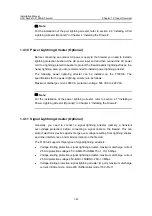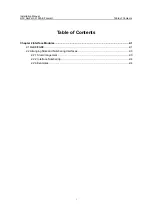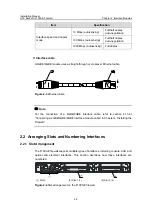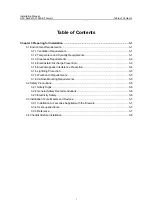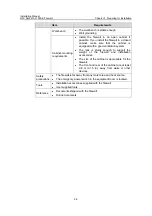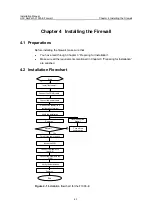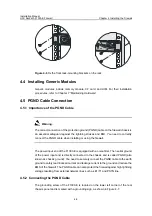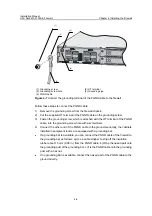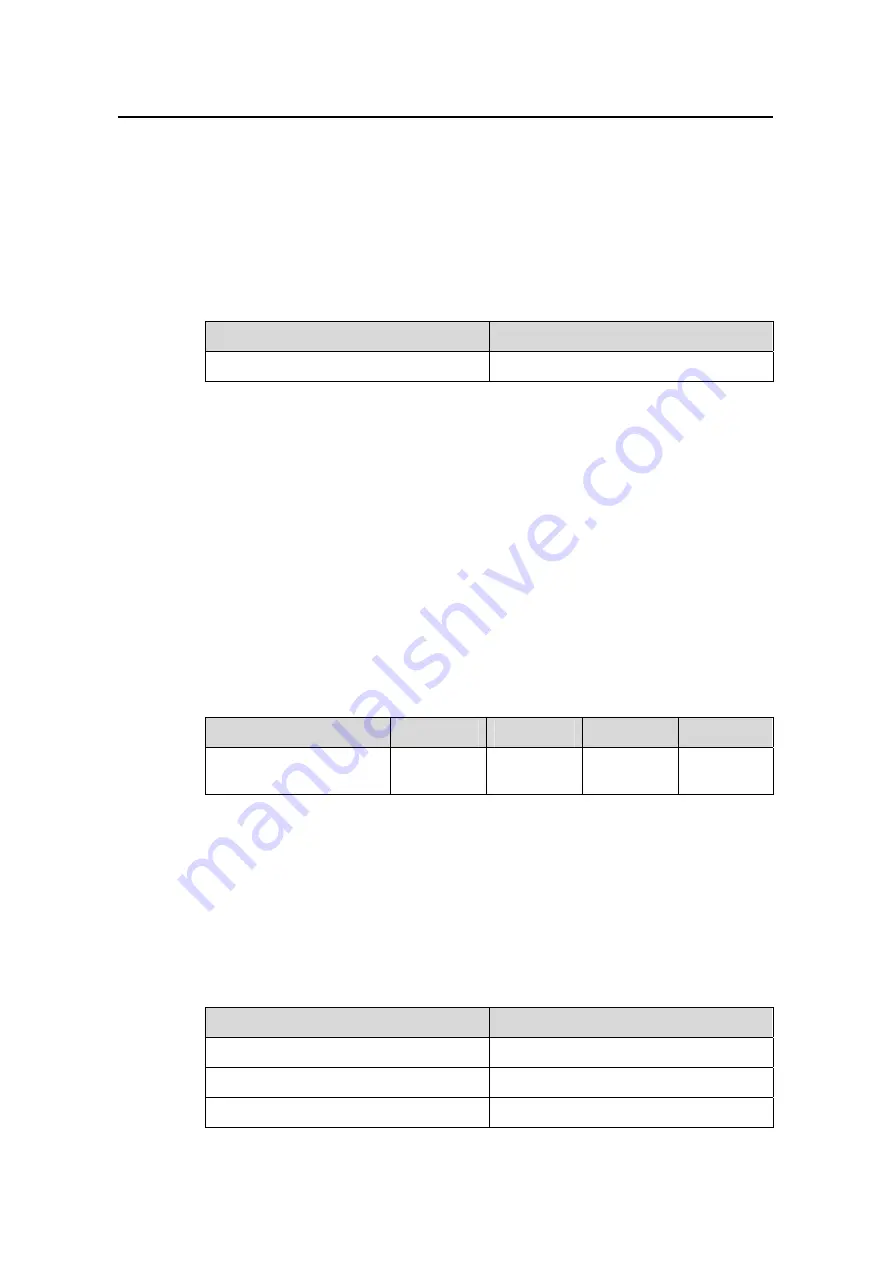
Installation Manual
H3C SecPath F1000-E Firewall
Chapter 3 Preparing for Installation
3-2
A long-term low relative humidity will result in looseness of fastening screws owing
to shrinkage of insulation washers, or electrostatic discharge (ESD), which may
damage the CMOS circuit on the firewall.
A high temperature will speed up the aging of insulation materials, which greatly
lowers the firewall’s reliability and shortens the service life.
Table 3-1 lists the requirements on temperature and humidity for the F1000-E.
Table 3-1
Temperature and humidity requirements in the equipment room
Temperature
Relative humidity
0°C to 45°C (32°F to 113°F)
10% to 95% (noncondensing)
3.1.3 Cleanness Requirements
I. Concentration limit of dust
Dust is harmful to the safe operation of the firewall. Dust on the chassis may result in
static adsorption, which causes poor contact between metal connectors or joints. The
poor contact may not only shorten the service life of the firewall, but also bring about
communication failures. Especially under the condition of low indoor humidity, dust is
apt to adsorb.
Table 3-2 lists the requirements on the dust concentration and diameters in the
equipment room.
Table 3-2
Limitation on dust concentration and diameter in the equipment room
Diameter (
μ
m)
0.5
1
3
5
Concentration limit
(particles/m³)
1.4×10
7
7×10
5
2.4×10
5
1.3×10
5
II. Concentration limit of harmful gases
Besides, the contents of salts, acids, and sulfides in the equipment room of the firewall
should be strictly restricted. Harmful gases could accelerate the corrosion of metal
parts and the aging of some parts. Table 3-3 lists the concentration limit of SO
2
, H
2
S,
NH
3
, and CI
2
in the equipment room.
Table 3-3
Concentration limit of some harmful gases in the equipment room
Gas
Max (mg/m
3
)
SO
2
0.2
H
2
S 0.006
NH
3
0.05






